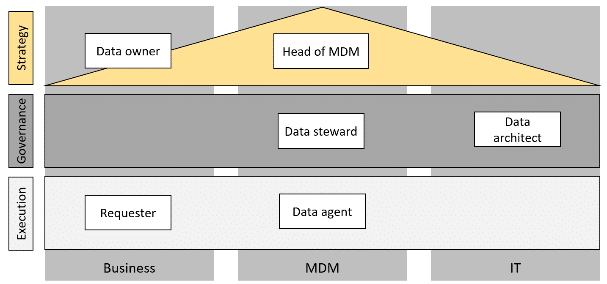Data cannot fulfill its true purpose within the structure of a traditional enterprise. But when organizational strategies are defined down to the data-strategy level and supported by a data-centric structure, businesses can acquire the insight and capabilities they need to stay competitive.
Unfortunately, consequences can run deep when executives place insufficient importance on the value of data at strategic and operational levels. Organizations often become too stagnant to evolve with market dynamics and changing business needs to effectively challenge competitors and gain considerable market share.
I have experienced how the long-term success of a company begins with an executive-level commitment to become a data-driven business. By unifying every area of the enterprise with this foundational goal, organizations can collaboratively develop an outcome-driven data strategy that breaks down the enterprise strategy into measurable data key performance indicators (KPIs).
Setting the Foundation for a Data Culture
For many SAP customers, SAP Advisory Services is a critical part of their transformation into a truly data-driven business. The opportunity to foster innovation, nurture ideas, and build a resilient infrastructure with supporting processes enables organizations to understand the value of data and apply it to resolve business challenges with less risk and cost.
One of the first steps that our advisory experts undertake is to help our customers establish the essential cornerstone of a data-driven business. They outline a framework of critical positions – which we call a “house of roles” – needed to support the data transformation of each organization.

Each role in the framework has a unique set of responsibilities to help ensure control over the data landscape in terms of quality, consistency, relevance, processing performance, regulatory compliance, security, and authorized access:
- The data owner (usually a level-one manager) is accountable for a specific subset of data and defines management goals.
- The head of master data management (MDM) or chief data officer oversees data objects within scope, defines objectives for data quality and specifications, and monitors respective service-level agreements and KPIs.
- The data steward defines governance rules and validates maintenance requests for specific data objects to help ensure business intelligence remains high in quality and integrity.
- The data architect designs master data processes and logistics for dependent systems and provides technical support, such as data-quality rules and analysis.
- The data requester (any employee) requests new data or changes in existing data.
- The data agent creates and maintains master data in consultation with a data requester.
When setting up the framework, conflicts may occur within it. For example, the head of MDM may want data agents to be responsible for maintaining a specific set of data, while business organizations may disagree.
SAP Advisory Services helps defuse such controversies by leading workshops that allow our customers to transparently define roles with the involvement of all relevant stakeholders. This exercise includes the appointment of employees to each position and a data domain for which they will manage communications and governance requirements.
Cultivating Pivotal Change
Data-driven businesses begin with a clear decision-making process that transforms the company into a culture that values data accountability and governance. Through the “house of rules” framework, SAP Advisory Services can bring customers one giant leap closer to realizing this vision.
What does this mean for SAP customers? A world of opportunity. In addition to having a complete foundation for correct, fact-based decision-making, they can open up new revenue streams through data monetization and uncover insights already existing in their business applications.
Jan Hoffmann is a business processes principal consultant at SAP.



